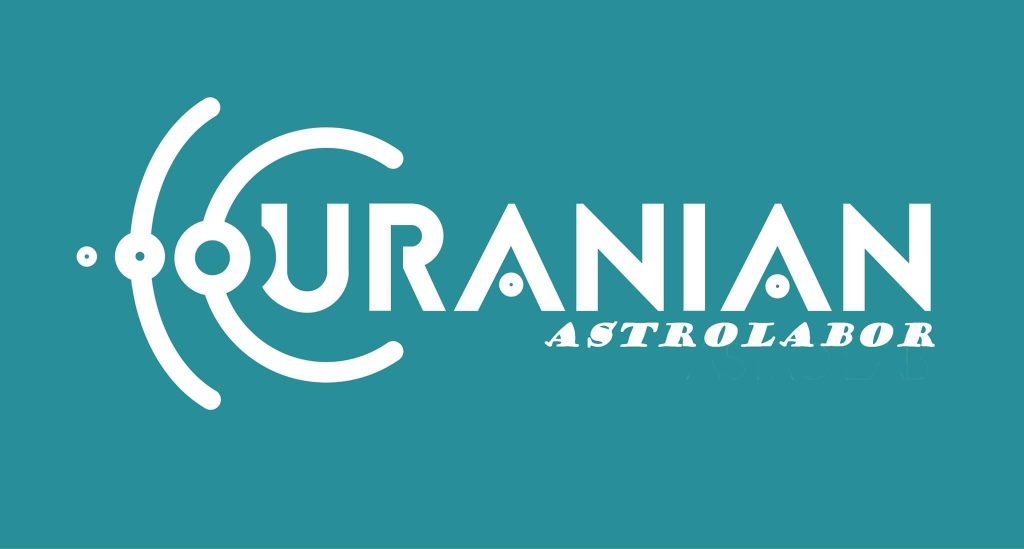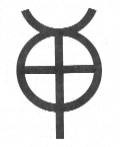
Uranian Astrology is a purely mathematical-geometric model of astrology Uranian Astrology is a purely mathematical-geometric model of astrology. Its inspiration was Alfred Witte. Witte began his career as an astrologer around 1913. It should be noted that Witte was not a professional astrologer as he served as a surveyor in the Hamburg Town Planning Department. In 1919 he became a member of the Kepler group in Hamburg and from then on he came into contact with Friedrich Sieggrun, where a long-lasting friendship and collaboration developed.
The beginning was made on the 360 cycleο
degrees but the restless and highly innovative mind of Alfred Witte managed to “capture” the 90 degree circle.ο
degrees. Witte himself had found the Hypothetical planets Cupid, Hades, Zeus and Kronos. Later, around 1924, Sieggrun introduced Apollon, Admetos, Vulkanus and Poseidon. The company of the pioneering German astrologers were Alfred Witte, Ludwig Rudolph, Friedrich Sieggrun, and Dr Hubert Korsch, Reinhold Ebertin, Herman Lefeldt.
In the year 1926 the Regelwerk fur Planetenbilder (first edition) is published in Germany, which does not contain Pluto or the additional planets used by Uranian Astrology. Two more editions followed in 1932 and 1935 respectively. In 1940 Reinhold Ebertin published the book The Kombination der Gestirneinfluße i.e. the Combinations of Cosmic Influences where it contains midpoints with Pluto but not with the Hypotheticals. In 1946 Herman Lefeldt released Regelwerkfur Planetenbilder in which we have the introduction of Pluto and the other planets used by Uranian.
The Circle of 90ο and the use of the facades
The conception of Alfred Witte’s idea is extremely simple. I think we all know from Classical Astrology the qualities, i.e. impulsive, stable and mutable signs. The philosophy of the 90 cycleοis extremely simple. From zero to 30 are impulsive, from 30 to 60 are constant and from 0 to 90 are variable. So if we want to apply on paper we will have the following:
Let’s say that the Ascendant is at 5 Libra and Saturn is at 5 Cancer. We will go to 5η degree of impulsives (i.e. from 0 to 30) and we will write there the Ascendant as well as Saturn. In your eyes it will look like a session. Suppose we have Mercury in 16
η
the fate of Leo while Mars is in the 17th
of Scorpio. We will write in the area spanned by the group of constants and put 30 (where is the zero degree of the constants +16= 46 . So in 46th
squadron we will put Mercury while in 47th
Mars. If we have the Moon on 21th
the fate of Gemini and Jupiter in 10th
of Virgo then we will write with reference-starting point 60 . So 60 + 10 = 70 . So there at 70 we will register Jupiter while at 81th
the Moon.

Cycle of 90ο ,of Uranian Astrology
The School of Alfred Witte uses the so-called hard aspects, i.e. conjunction, semi-square, square, square and a half, opposition as well as the 22.30 aspect and all its derivatives. From this point we start to get into completely mathematical models. There are the axes Interspaces (their interpretation can be found in the article “The Uranian Axes”) of the type A/B, which refers precisely to the interspace of two planets or points. For example, the SATURN/NEPTUNE formula means the Saturn-Neptune Midspace. Similarly, the equation of the type A=B/C or B/C-A, refers to the relationship between a third factor (planet or point) and a specific interspace. For example, the equation VENUS=KRONOS/HADES indicates that Venus is in the interspace of KRONOS and HADES.
The Planets of Uranian Astrology

This is Cupid and it has a complete orbit around the Sun in 262.5 years. Cupid’s symbol is a combination of Jupiter and Venus. This combination shows us the social extension of Jupiter and the artistic nature of Venus. Its participation in axes (A/B) or in sensitive points (A+B-C) brings to mind the concept of companionship. It indicates groups of people, clubs, parties, organisations, fellowship.

And his name is Hades. A full orbit of 360.66 years. It symbolizes anything dirty and filthy, unhealthy and unclean. Also, and this is depending on what axis it will fall on to form an equation, it is related to secrets, discoveries buried in the earth (archaeology) as well as “forgotten” languages (e.g. Aramaic, Sanskrit or Latin). People who are of the underworld, who are slow in the bowels of the earth or who are doctors are associated with Hades.

This symbol is Zeus. In ancient Greek, the accusative has two types of vocative, Xena and Zeus. In classical astrology, Jupiter is the planet of expansion. Zeus here is associated with shots, creation but also with pregenetic potential. The Uranian Zeus is closer to the Greek type of God, as it is associated with gunfire, thunderbolts but it is also associated with one’s ability to create. Also for those who have some belief in a Higher Power it should be made clear that the actions of Zeus are what some perceive as Divine intervention.

This is KRONOS and should not be confused with Saturn of classical Astrology. Uranian KRONOS has a full orbit of 521.8 years and symbolizes power. State officials, high-ranking people, have Kronos to participate in equations. It is related to tall buildings, pilots, skyscrapers, captains, etc.

Apollon is a planet that contains within it expansion, increase in number. It is related to science, commerce, Astrology and Peace Missions. A full orbit of Apollo has a duration of 576 years.

Admetos makes a full orbit of 624 years. It is related to immovable opinions, stagnation and the seat. It often takes a position on issues related to real estate, specialization or death.

Vulcanus is associated with dynamics, power and energy. It shows the empowerment in an equation. One orbit has a duration of 663 years.

Poseidon has a full orbit every 740 years. It shows inspiration, religion, spirit, philosophy, and the spirit
Bhakti Marga Sadhana

OM Chanting
SERVE THE DIVINE BY SERVING HUMANITY Om is the universal sound of creation, the highest and purest vibration that exists. When we practice OM...

Babaji Surya Namaskar
BABAJI SURYA NAMASKAR – A MOVING PRAYER Start your day with a moving prayer. Babaji Surya Namaskar is an ancient sun salutation in which every...

Uranian Astrology
Uranian Astrology is a purely mathematical-geometric model of astrology Uranian Astrology is a purely mathematical-geometric model of astrology. Its inspiration was Alfred Witte. Witte began his career...

Yoga Bhakti Marga (Sadhana)
Sadhana: a spiritual practice A sadhana is a spiritual practice. Through the Grace of spiritual Masters Paramahamsa Vishwananda and Mahavatar... It allows you to pass into the silence of the...

Project Mantra
PROJECT MANTRA QUIET THE MIND, OPEN THE HEART DEVELOP A DAILY CHANTING PRACTICE Project Mantra is a free, guided program to help you gradually...

Atma Kriya Yoga
REALISE UNCONDITIONAL LOVE Your soul, or atma, is the eternal part of you that animates your mind and body. Paramahamsa Vishwananda gave Atma... Paramahamsa Vishwananda...

